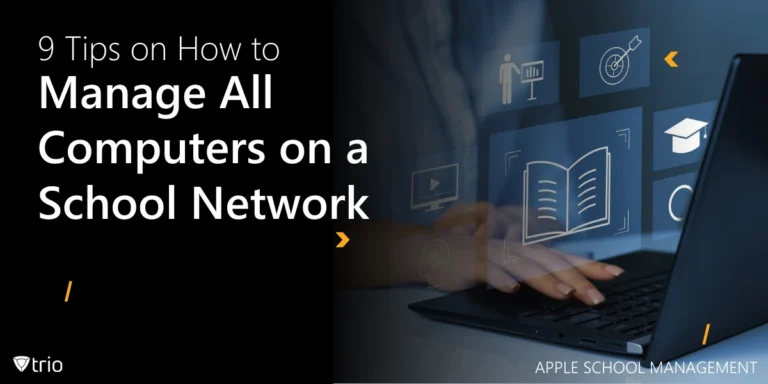In today’s cybersecurity landscape, organizations face constant and evolving threats. To combat these, companies need structured, actionable security guidelines. This is where the Center for Internet Security (CIS) Controls comes in—a set of best practices designed to reduce risks from known cyber threats. With 18 critical security controls covering a wide array of practices, the CIS Controls provide an effective framework for organizations to strengthen their defenses. This article will delve into the core aspects of CIS Controls, their benefits, key control categories, and how businesses can implement them for improved security.
What are CIS Controls?
CIS Controls are a set of best practices developed by the Center for Internet Security, aimed at helping organizations safeguard their IT infrastructure and protect against cyber threats. These controls are mapped to known vulnerabilities and offer prescriptive actions, making them a valuable resource for organizations across various industries to use as part of their IT compliance plans. Unlike some other frameworks, the CIS Controls prioritize practicality, focusing on steps that deliver substantial security improvements with measurable impact.
Why Are CIS Controls Important?
Here are a few reasons as to why Center of Internet Security controls matter:
- Reduced Risk of Cyber Threats: The CIS Controls target common vulnerabilities and known attack patterns, meaning organizations that follow these guidelines can significantly reduce their exposure to cyber threats.
- Adaptable for All Organizations: With tiers of control maturity, the CIS Controls apply to businesses of all sizes, allowing small and medium enterprises to achieve security best practices with an incremental approach.
- Compliance Support: While CIS Controls are voluntary, they align well with compliance requirements in sectors like healthcare, finance, and government, simplifying the path to regulatory adherence.
- Alignment with Frameworks: CIS Controls can complement broader security frameworks such as the NIST Cybersecurity Framework, helping organizations create a comprehensive, multi-layered security strategy.
Key Categories of Center for Internet Security Organizational Controls
The CIS Controls are structured into three implementation groups (IGs), each representing a different level of control maturity and resources. The 18 controls themselves span various domains, each with sub-controls designed to guide users in effective security practices. Below, we highlight some of the key controls that are especially relevant to today’s threat landscape.
1. Inventory and Control of Enterprise Assets
Managing an inventory of authorized (and unauthorized) devices is crucial for security. This control helps organizations detect and manage any rogue devices on their networks, making it easier to manage access and reduce points of vulnerability.
- Why It’s Important: Many security incidents stem from unauthorized devices with weak security configurations. By regularly updating device inventories, organizations ensure that only approved devices can access their network.
- Best Practices: Implement automated asset discovery tools to keep track of devices, monitor changes in real-time, and set up alerts for any unauthorized access.
2. Inventory and Control of Software Assets
Just as with physical devices, managing an inventory of software assets is equally vital. This control involves identifying authorized software, removing unauthorized applications, and continuously monitoring for unapproved software.
- Why It’s Important: Software vulnerabilities are a leading cause of security incidents, so controlling the applications that can operate within the network is critical for reducing attack vectors.
- Best Practices: Use endpoint management tools to enforce software policies, identify outdated applications, and schedule regular updates to minimize vulnerabilities.
3. Data Protection
Data breaches and data theft have far-reaching consequences. This control focuses on ensuring sensitive data is properly classified, encrypted, and monitored at every point.
- Why It’s Important: Protecting sensitive data not only reduces risks of breaches but also ensures compliance with data privacy regulations.
- Best Practices: Implement strong encryption standards, enforce data access policies, and monitor data flows across all endpoints.
4. Secure Configuration of Enterprise Assets and Software
Poorly configured assets, whether software or hardware, create vulnerabilities that hackers can exploit. CIS recommends ensuring all devices and software are configured securely to prevent unauthorized access.
- Why It’s Important: A misconfigured firewall or unpatched operating system can expose sensitive data or allow attackers to bypass security controls.
- Best Practices: Use configuration management tools to automate secure configurations, conduct regular reviews, and implement patch management for all devices.
5. Account Management and Access Control
Proper account management ensures that only authorized users can access systems and sensitive data. This control requires organizations to limit and manage administrative privileges, implement multi-factor authentication, and regularly audit user accounts.
- Why It’s Important: Unauthorized access is a primary vector for data breaches, making strict control over access a must for every organization.
- Best Practices: Enforce the principle of least privilege (PoLP), use two-factor authentication, and disable inactive accounts promptly.
6. Continuous Vulnerability Management
Organizations need a strategy to identify, remediate, and monitor vulnerabilities as part of an ongoing risk reduction process. CIS recommends frequent vulnerability assessments to detect issues before they are exploited.
- Why It’s Important: Hackers exploit unpatched vulnerabilities, so regularly identifying and addressing them is essential to maintaining a secure environment.
- Best Practices: Conduct periodic vulnerability scans, utilize threat intelligence for proactive patching, and prioritize high-risk vulnerabilities.

Center for Internet Security Critical Controls
The Center for Internet Security Critical Controls (CIS Critical Controls) is a prioritized set of cybersecurity actions designed to help organizations defend against common cyber threats effectively. Developed by the Center for Internet Security (CIS), these controls are best practices curated from global industry expertise to provide a practical roadmap for enhancing an organization’s security posture. Originally known as the SANS Top 20 or CIS Top 20, the CIS Critical Controls are periodically updated to address new and emerging threats in cybersecurity. The framework consists of 18 critical controls (as of the most recent version), categorized into three main groups based on implementation ease and impact:
- Basic Controls (first 6 controls): Foundational actions that should be implemented universally for basic protection, such as asset management and vulnerability management.
- Foundational Controls (controls 7–16): These require more technical resources but provide robust security, covering areas like email, malware defenses, and data recovery capabilities.
- Organizational Controls (controls 17–18): Focused on security management and governance, these controls address security awareness training and incident response.
CIS Controls Best Practices for Organizations
A few tips and best practices that every organization can use when it comes to CIS controls are as follows:
- Start with Basics: Begin with foundational controls like asset and software inventory management to establish a secure base.
- Leverage Automation: Many controls, like vulnerability management and software inventory, can be automated, freeing up resources and ensuring consistency.
- Integrate with Other Frameworks: Combining CIS Controls with frameworks like NIST, ISO 27001, and GDPR can enhance compliance and security effectiveness.
- Focus on High-Risk Areas: Use risk assessments to prioritize controls that address the most pressing security threats to your organization.
Conclusion
CIS Controls provide a comprehensive and practical approach to cybersecurity, guiding organizations through the steps needed to safeguard their digital assets and data. By adopting these controls, organizations can proactively address common vulnerabilities, streamline compliance efforts, and enhance overall security posture. Trio’s Mobile Device Management (MDM) solution integrates with these security practices, allowing for seamless device management and monitoring to keep your network and endpoints safe.
Take the first step in securing your organization by exploring Trio’s MDM solution today! Start a free trial and experience the peace of mind that comes with comprehensive cloud security and device management.
Get Ahead of the Curve
Every organization today needs a solution to automate time-consuming tasks and strengthen security.
Without the right tools, manual processes drain resources and leave gaps in protection. Trio MDM is designed to solve this problem, automating key tasks, boosting security, and ensuring compliance with ease.
Don't let inefficiencies hold you back. Learn how Trio MDM can revolutionize your IT operations or request a free trial today!




